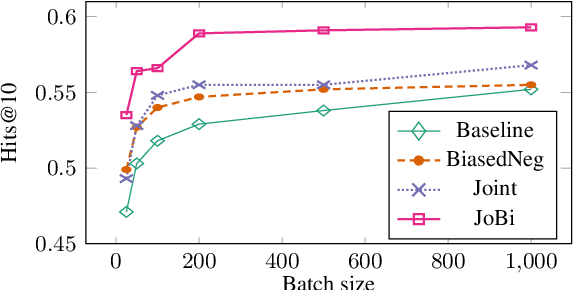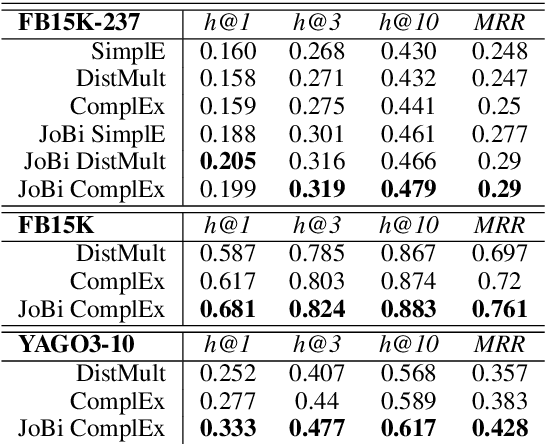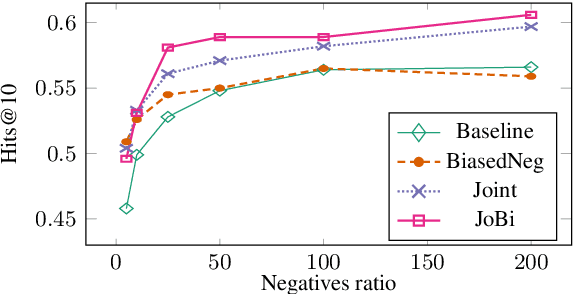Dave Palfrey
Using Pairwise Occurrence Information to Improve Knowledge Graph Completion on Large-Scale Datasets
Oct 25, 2019



Abstract:Bilinear models such as DistMult and ComplEx are effective methods for knowledge graph (KG) completion. However, they require large batch sizes, which becomes a performance bottleneck when training on large scale datasets due to memory constraints. In this paper we use occurrences of entity-relation pairs in the dataset to construct a joint learning model and to increase the quality of sampled negatives during training. We show on three standard datasets that when these two techniques are combined, they give a significant improvement in performance, especially when the batch size and the number of generated negative examples are low relative to the size of the dataset. We then apply our techniques to a dataset containing 2 million entities and demonstrate that our model outperforms the baseline by 2.8% absolute on hits@1.
Demand-Weighted Completeness Prediction for a Knowledge Base
Apr 30, 2018



Abstract:In this paper we introduce the notion of Demand-Weighted Completeness, allowing estimation of the completeness of a knowledge base with respect to how it is used. Defining an entity by its classes, we employ usage data to predict the distribution over relations for that entity. For example, instances of person in a knowledge base may require a birth date, name and nationality to be considered complete. These predicted relation distributions enable detection of important gaps in the knowledge base, and define the required facts for unseen entities. Such characterisation of the knowledge base can also quantify how usage and completeness change over time. We demonstrate a method to measure Demand-Weighted Completeness, and show that a simple neural network model performs well at this prediction task.
 Add to Chrome
Add to Chrome Add to Firefox
Add to Firefox Add to Edge
Add to Edge